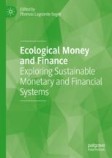Search
Search Results
-
The interest group origins of the Bank of France
This paper contrasts different interpretations of the creation of the Bank of France. I argue that the Bank of France was the product of rent-seeking...

-
Bagehot for “Followers”: How Did the Bank of Portugal Manage the First Post World War I Crisis?
The lender of last resort (LLR) function is a form of micro-management employed by central banks, usually in cooperation with or under the direction...
-
The Anatomy of a Typical Crisis
Hyman Minsky’s model successfully describes credit-fueled booms and financial crises. A ‘displacement’ that flags a novel profit opportunity can lead...
-
Conclusion: Toward a Pathway of Responsible Development
This chapter concludes with a survey of the shortcomings of central banks, particularly the United States Federal Reserve Bank and the Bank of Japan,...
-
The Ideas and Policies of the Banking School
This chapter describes the Banking School’s theory of crises, which it linked to interest rates and the flows of investment capital that they...
-
Allyn Young (1876–1929)
This chapter discusses Allyn Young’s disequilibrium approach to economics, his theory of growth and increasing returns, his ideas on imperfect...
-
A critical analysis of the loanable funds theory: some notes on the non-neutrality of money
The loanable funds theory is at the core of the mainstream monetary theory and of the theoretical model used in the decision-making process of the...
-
An innovative machine learning workflow to research China’s systemic financial crisis with SHAP value and Shapley regression
This study proposed a cutting-edge, multistep workflow and upgraded it by addressing its flaw of not considering how to determine the index system...

-
Crypto Assets (Cryptocurrencies) and Central Bank Digital Currencies
Bitcoins, which drew attention worldwide after their price soared in 2017, began to be seen as a high-risk investment after crashing in 2018.
-
Contradictions in Hilferding’s Finance Capital: Money, Banking, and Crisis Tendencies
Hilferding’s theory of money, credit, and capitalist crisis tendencies has never been more important to reconsider. Its strengths and weaknesses have...
-
Infrastructure of Inclusive Finance in China
Financial infrastructure refers to the systems and institutional arrangements that provide basic public services for various financial activities; it...
-
In Search for a New Monetary Policy Framework
This chapter argues on a major rethinking of the basic framework for monetary policy following the recognition that the financial sector plays an...
-
Rethinking Hilferding’s Finance Capital
Krätke offers a clear overview of the history of this seminal work by Rudolf Hilferding, from its inception to its making, its impact and reception...
-
“Good Money Drives Out Bad” Among Diversifying e-Moneys: Cryptocurrency, Stablecoin, and Digital Community Currency
The present chapter depicts the modern outlook of evolution of money in the twenty-first century as the ongoing process of diversifying such private...
-
The International Monetary System in the (Very) Long Run
The international financial system evolved out of the need for trade settlement and trade credit as early as 4000 BCE. Then, from the late thirteenth...
-
The institutional evolution of central banks
This article contributes to the literature on central banks’ institutional rationale and evolution by analyzing the early development of the Bank of...
-
Gold, Currency and Stamps: The Rejected Plans for a State and Public Bank in Early Colonial Zimbabwe (1896–1907)
The chapter examines the process of establishing a colonial monetary system. In particular, it looks at how the Legislative Council (Leg.Co) of...
-
Exploring Monetary Systems
Modern monetary system are complex social constructs. Monetary aggregates—which serve as medium exchange and as a store of value—are all denominated...
-
The Financial System and the State
In no way is the state an expression of the collective will of a nation; instead, it is the state institutions that determine territorial boundaries,...
-
Fiscal Operations in a Nation That Issues Its Own Currency
In this chapter we will begin to examine our next topic: government spending, taxing, interest rate setting, and bond issue—that is, we will examine...
